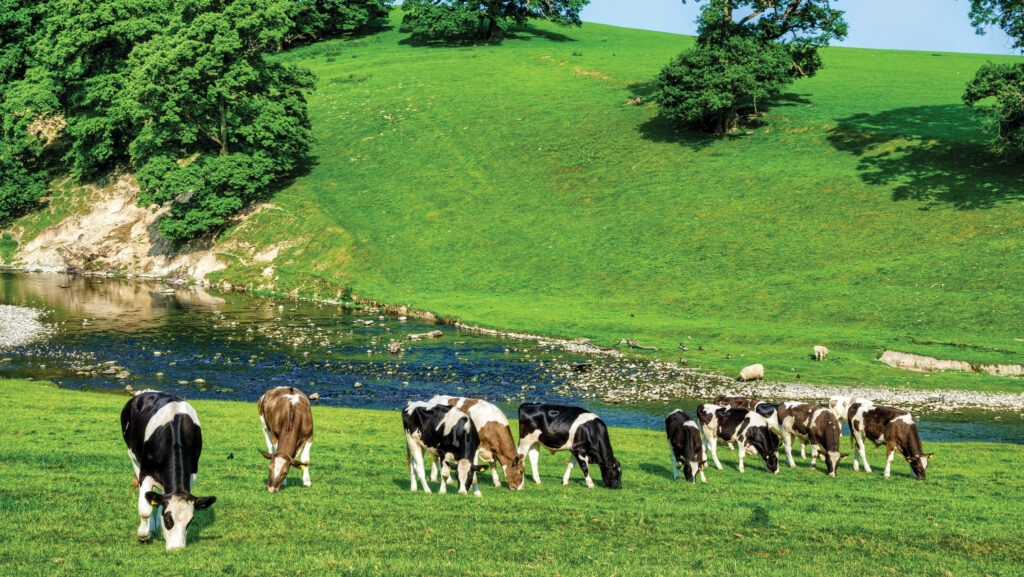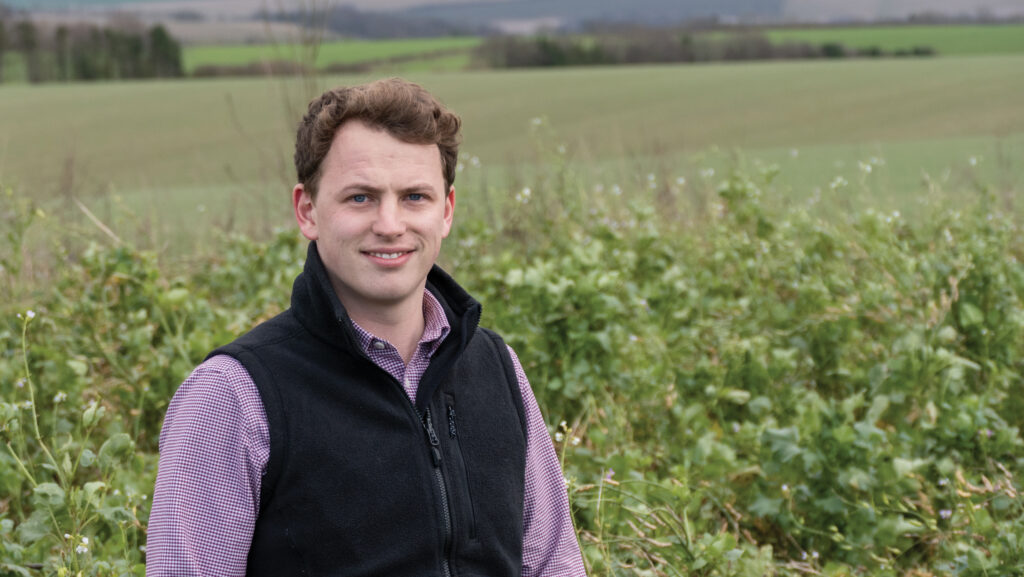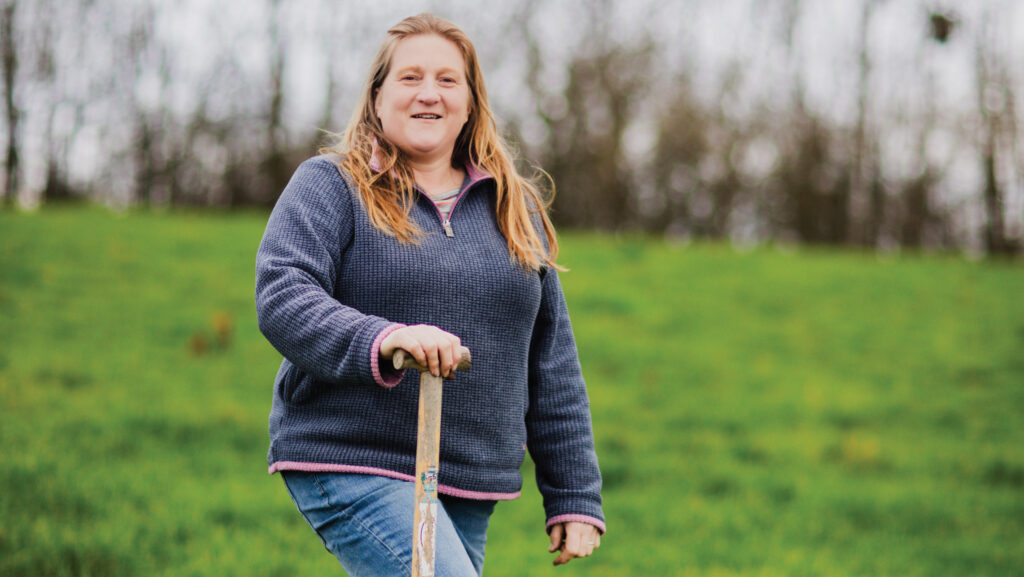How to start improving on-farm water quality
 © AdobeStock
© AdobeStock Putting resilience measures into a farming business is one of the best ways to protect water, prevent pollution and retain more water in the landscape.
With many of the major water quality initiatives paused due to funding constraints, current advice focuses on encouraging farmers to understand how land management practices and input applications impact water.
“Water is a good metric for what’s happening to the farm,” says Richard Reynolds, senior agronomy adviser of Anglian Water.
“If you are losing valuable inputs off the farm due to water movement, from either run-off or leaching, you are probably losing money.
“Knowing what these losses are is a good place to start; once there’s a better understanding of the challenge at an individual farm level, there’s usually a plan that can be implemented to solve it.
“It’s a win-win; good for the farm and good for water.”
See also: Why reservoirs are key to sustainable water abstraction
Nitrates
His advice to farmers in the East is to concentrate on nitrates.
“This will become a bigger issue in dry years, when there is less water in the rivers and crops are unable to take up fertiliser applications. It’s particularly relevant for arable farmers.
“Metaldehyde used to be our biggest challenge, now its nitrates, so farmers should expect greater scrutiny of nitrogen applications and be prepared to work collaboratively to reduce losses.”
In wet years, pesticides are the main issue, he adds. “Again, it’s the loss of investment that we focus on with farmers. Finding ways to keep them on the land makes sense for everyone.”
Sustainable water management practices are varied, he adds, meaning that there are plenty of solutions to consider.
“In a water company’s case, where the system has been designed around pesticide and nutrient challenges, soil health is an obvious place to start – if your soil is working like a sponge, it will be holding more of the water and minimising those losses.”
For most, that means improving soil organic matter levels to improve its water holding capacity and increase infiltration rates, as well as looking for ways to keep the soil covered and reducing tillage where appropriate.
Key on-farm actions for water
- Improve soil health to absorb more water, prevent run-off and minimise leaching
- Plant cover crops to retain nutrients, reduce soil erosion and build soil structure
- Reduce tillage if soil type and conditions allow to limit soil loss, compaction and capping
- Put in targeted buffer strips to break the pathway of nutrient/sediment/pesticide loss
- Manage livestock access to watercourses by fencing them off and providing alternative drinking water sources
- Monitor water quality to understand where risks are and plan nutrient use according to regulations and weather conditions
- Avoid pollution from the farmyard by using drip trays, proper storage of slurry and by separating clean and dirty water.
- Join local/catchment initiatives and consider landscape changes
Grant funding
Anglian Water recognises that farmers often have the local solutions that work, so its Farming Innovation Grant programme is run to support those risk-sharing ideas and fund approaches that can be scaled up.
“It provides up to £7,500 per farm,” says Richard. “Although we have defined application windows, we are always prepared to look at projects that will help with the water quality challenges we all face.”
Training and events grants are on offer too, with 50% of the cost of attending courses up to £600 available.
Anglian Water is also involved in Landscape Enterprise Networks (Lens), which brings organisations together to co-fund measures that improve landscapes and protect water quality.
“Where we can collaborate, it makes sense to do so. The same is true of farmer action, which is why we have provided two years of funding to 10 cluster groups.”
Where will the money come from?
Agri-environment schemes, water company catchment management partnerships and local environmental initiatives are all ways to get financial help with making changes for water, but farmer ambition is currently ahead of funding availability.
Payments for ecosystem services such as flood mitigation haven’t progressed as hoped for, although some private money for long-term projects is being discussed and the first Landscape Recovery projects are now moving forward.
For those in Higher Tier Countryside Stewardship, there are higher paying, long-term options for water protection, such as managing species-rich floodplain meadows.
Otherwise, the new version of the Sustainable Farming Incentive, when it is opened next year, is expected to have bundles of actions that help with water quality aims.
Nutrient Neutrality, a planning policy where housing developers in specific water catchments are required to mitigate the nutrient impact of any developments on the river, has been made mandatory in 74 catchments.
However, the government is currently reshaping the policy under the Planning and Infrastructure Bill.
For farmers, both nitrate and phosphate credits are likely to be of interest but will often require taking areas out of production.
Current funding opportunity – Big Chalk
Chalk streams are included in a new capital funding programme designed to help restore and reconnect the chalk and limestone landscapes found from Dorset to Norfolk, an area spanning some 20% of England.
Applications to the Big Chalk Nature Recovery Fund opened in August 2025, with the aim of supporting bold, practical projects – either by fully funding them, offering match funding or providing top-up grants to help scale existing ideas.
Individual grants of up to £75,000 are available, for the purchase of equipment, creation of new infrastructure and the restoration/establishment of habitat.
They cannot be used to support on-going running costs or revenue.
Funded through the Protected Landscapes Partnership and supported by Defra, the funding must be spent by 31 March 2026.
Farmer experience
For Lincolnshire farmer Colin Chappell, who has land adjoining the River Ancholme, working in partnership with his water company makes sense, especially as there is an Anglian Water abstraction plant on the farm.

Colin Chappell © Joanne Coates/NFFN
“Everything I do on the farm could have implications for water,” he says. “The partnership approach that I have with them means we find ways around any potential issues.
“It’s a carrot rather than stick approach, and the help I receive is really useful.”
In the past, he has received financial support for growing cover crops and benefited from a training grant.
He is keen to maintain this engagement and keep working with Anglian Water advisers, for both the farm business and the wider societal benefits it offers.
Colin reveals that the discovery of herbicide bentazone in a nearby borehole – not on his farm – meant that the water couldn’t be used for 10 years.
“That just shows why we all have a responsibility to act, especially as the climate continues to change.”
Another concern is that his farm is prone to flooding, with 120ha of cropping being lost in recent wet years.
Despite getting his soil in better shape so that it is working like a sponge, there are years when the amount of water is overwhelming.
“The focus has been to ensure that the local town of Brigg doesn’t flood so it has become a case of not if, but when, the farm floods.”
Payments for storing floodwater on farmland haven’t materialised as expected through government funding and the Sustainable Farming Incentive (SFI).
With further delays predicted, Colin is looking at what private money could offer.
“I’m part of the Environmental Farmers Group now and am also working with GIGL [Green Investment in Greater Lincolnshire] to explore these options.”
As a result, he is investigating a project that would involve him putting 15ha down to grass and leaving it. The land concerned is by the river and has a “leaky” bank.
Nature-based solutions
Building semi-natural features into the landscape – such as swales and bunds – can help to manage water flow.
Practices such as leaky dams, ponds and riparian buffer strips also help to hold water and remove sediment.
As Catchment Sensitive Farming adviser Tom Hall points out, these features need to suit the site and the water pathways through it.
This will nearly always produce better results if they are planned across a landscape rather than used in isolation.
“A bund that can hold 200-400cu m of water won’t make a difference in a serious flooding event, but where you have hundreds of them across the countryside you will see results.
“Multi-farm projects have lots of potential.”
This type of feature helps to deal with water upstream, to prevent problems happening further downstream, so their use is cost-effective and they are often easy to install, he adds.
In terms of government funding, Tom explains that Countryside Stewardship High Tier schemes are used for specific habitats and more ambitious projects.
Everything else connected with water should come through either the SFI or from capital grants for infrastructure.
Transition Farmer JM Stratton & Co
Water monitoring work on the River Wylye continues at Transition Farmer JM Stratton & Co in Wiltshire as part of a wider cluster group initiative.
It is aimed at achieving a better understanding of the impact of farming operations on water quality.

Transition Farmer, Ed Shuldham © Kathy Horniblow
Both nitrate and phosphate levels are checked monthly for members of the cluster group, confirms farm ecologist and cluster group facilitator Robin Leech, while sediment fingerprinting is done to get a gauge on the largest sources of sediment.
To date, the work has been conducted on the main stretch of the river, he confirms, but the focus will move this autumn to the head waters.
“Arable land isn’t having much of a sediment impact on the main river. It’s more about the channel bank and the grasslands close to the water.”
However, the river headwaters are more confined and the valleys are steeper, he says. “So the potential is for the arable land to have more influence.”
Nitrate and phosphate levels in the water are low, he reports. “They are related to rainfall, as you would expect, and they have clear trend lines.
“Farmer members have been really interested in the results and are keen to take any action where it’s needed.”
A larger Landscape Recovery project to re-naturalise the river and its floodplain encompasses up to 600ha in the catchment and should eventually bring financial rewards to those in long-term agreements.
“There’s a great deal that can be achieved by farmers working together on a landscape scale and that’s the best route for monetising improved water quality, through both private and public funding.”
Case study: Debbie Wilkins, Gloucestershire

Nature Friendly Farming Network member, Debbie Wilkins © Joanne Coates/NFFN
Producing good compost and clean water from slurry are the twin aims of a water management project planned for a Gloucestershire dairy farm, as it works towards a circular system.
The first phase has been completed, explains Nature Friendly Farming Network member Debbie Wilkins of Norton Court Farm, which showed that microbial composting and on-farm filtration systems could be used to remove solids and nutrients from dirty water.
Composting
At the outset, biology was used to make Bokashi compost from slurry solids, with the resulting 80t of compost used successfully on the farm’s maize crop.
For this to happen, straw and woodchip were added to the slurry, along with the right microbes, so that a nutrient-dense composted material was produced, replacing the need for some artificial fertiliser.
“We tried various recipes and learned quite a few lessons along the way,” she says.
“We now need to think about the infrastructure we would need to be able to do this composting process at scale.”
This initial stage of the project was made possible by receiving an Innovate UK starter grant and working collaboratively with the Royal Agricultural University, says Debbie, who is now keen to establish a wetland ecological treatment (WET) system to provide clean water.
Filtration
“Another part of phase one was to look at how we might be able to extract nutrients from the liquid fraction” she continues.
“So we filtered it by running it through some woodchip, which reduces the solids fraction from 6% to 3%, and then through some biochar to dissolve nutrients.”
There are other ways that this filtration process could be achieved, notes Debbie, although she is keen to return the woodchip and biochar that have captured the nutrients to the compost, so that they end up back on the land rather than being wasted.
“We still need to know more about what happens when we put the compost on the land, so we hope that will be part of phase two of this ambitious project.”
Wetland system
The other plan for phase two, depending on success with the next application for collaborative funding, is to put the resulting cleaner water sample into the constructed wetland system, using the power of the soil microbiome to improve the water quality.
The proposed wetland ecological system will be designed and created by Jay Abrahams of Biologic Design.
She has has more than three decades of experience in creating soil-based, multispecies constructed wetlands, designed to integrate wastewater purification with both habitat creation and biomass resource production.
“We know that constructed wetland systems, which follow the regenerative principles of applied permaculture design, work well,” she says.
“They use soil, not gravel, as the purification medium and also produce biomass yield or osier willow varieties, as well as enhancing biodiversity and supporting wildlife.”
The proposed WET system at Norton Court Farm would be a series of non-infiltration swales.
These comprise densely planted on-contour soil banks and pools, so that water moves slowly by gravity flow through the root zone of the system, being purified as it goes.
“The final pond would be of bathing quality. Keeping that water on the farm for use in a dry summer is another bonus from such a system.”
The willow growing on the pond banks would be coppiced to produce the woodchip for filtering and composting, she adds.
Getting biology and nature to do most of the work makes sense and fits with the regenerative approach used for running the farm, stresses Debbie.
“Managing water and nutrients on the farm are really important, and although we do have sufficient storage, doing it in a better way requires a change in the current system.
“It should only be a year before the wetland area is fully established and functioning well.”
She is still waiting to hear how the Environment Agency views Biologic Design WET systems, having asked for their involvement.
While they have been created for purifying domestic sewage, cider mill effluent, brewer and dairy washdown water and silage liquor run-off, as well as cheese-making wastewater, the water derived from dairy slurry hasn’t been tried yet.
Funding
Funding her plans is another matter.
The grant funding received to date covers the research that’s been done, but not the capital works associated with activities such as concreting yards and constructing wetlands.
“While the government schemes remain closed and the farm is not considered to be in a priority catchment, it seems there’s very little help available.”
